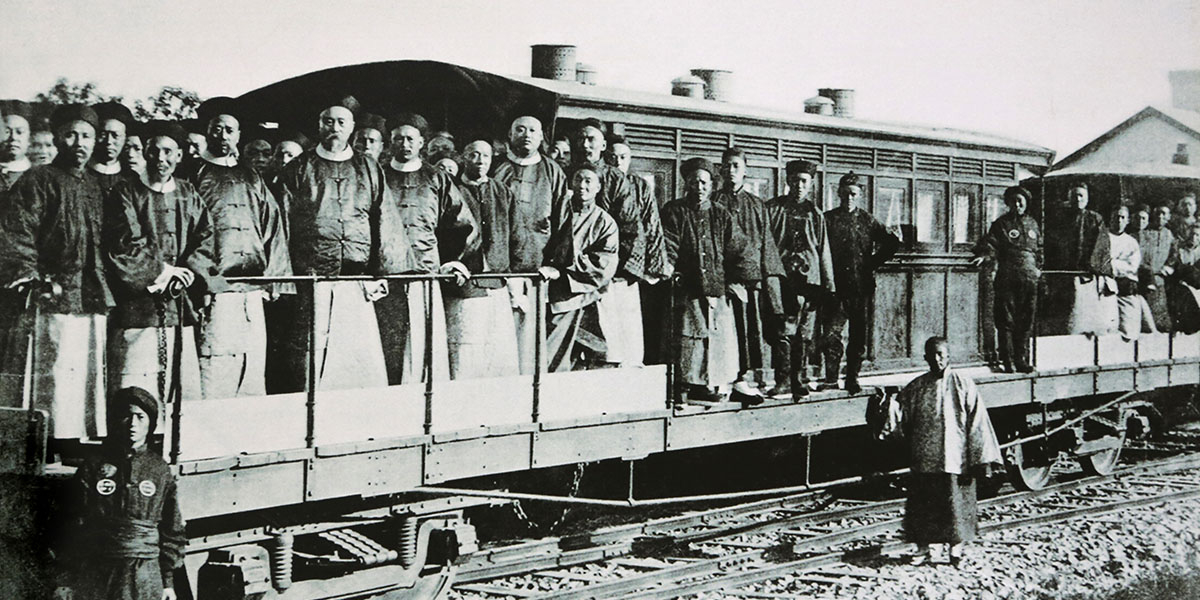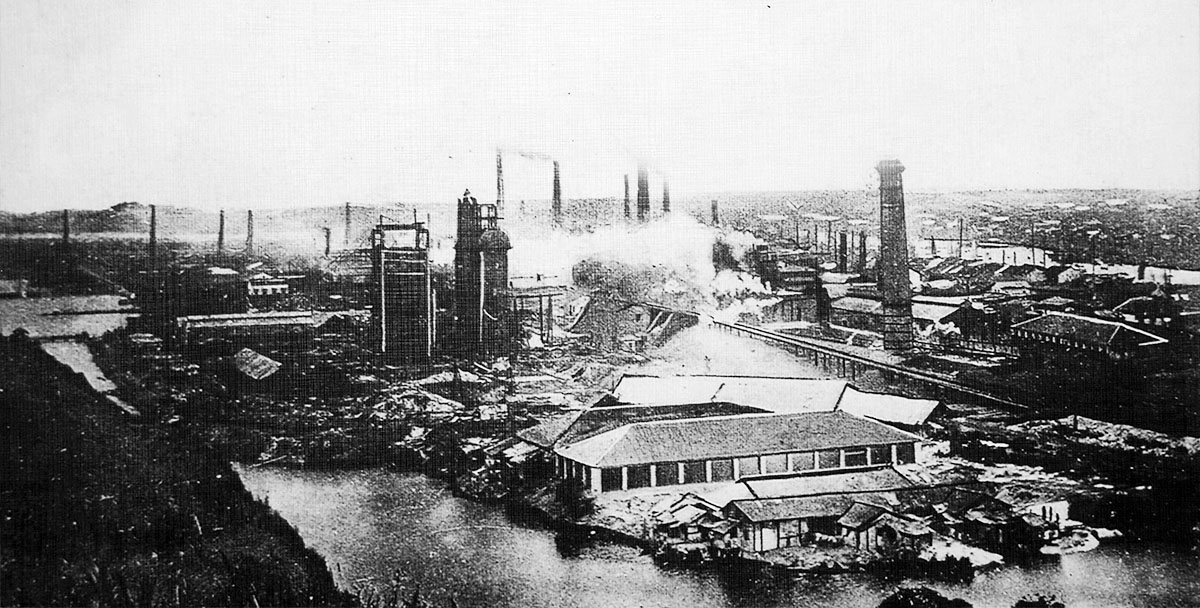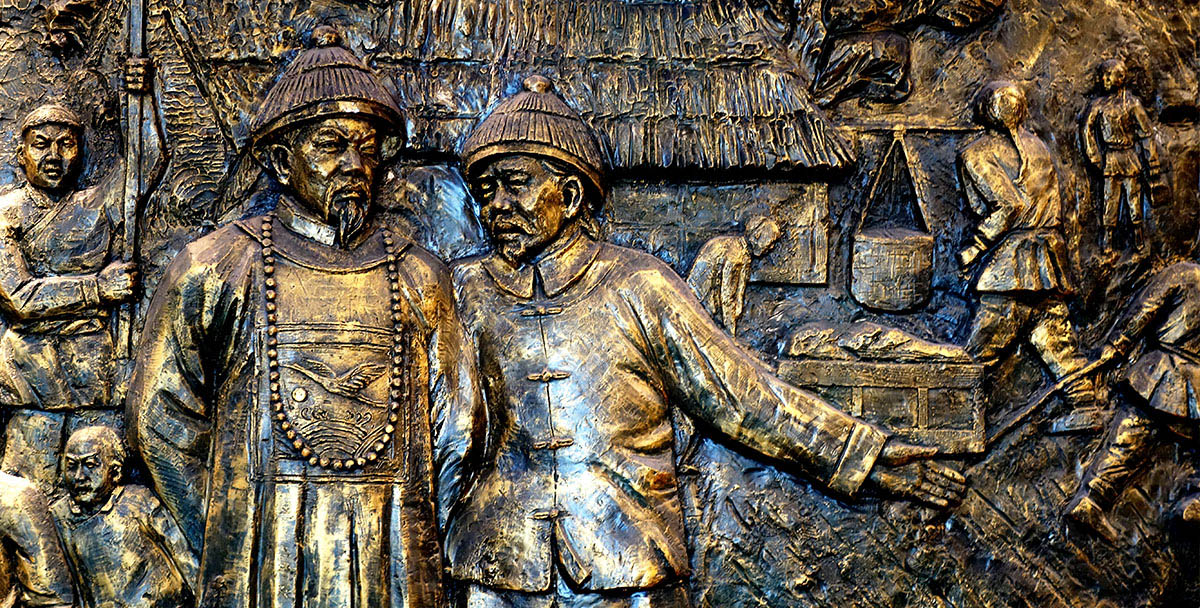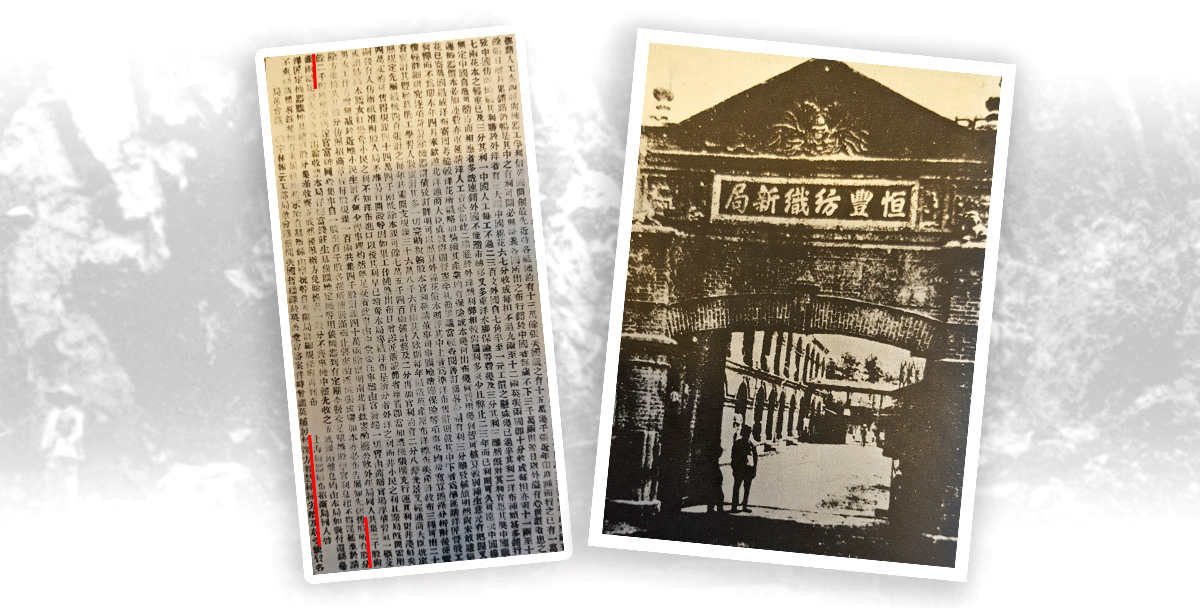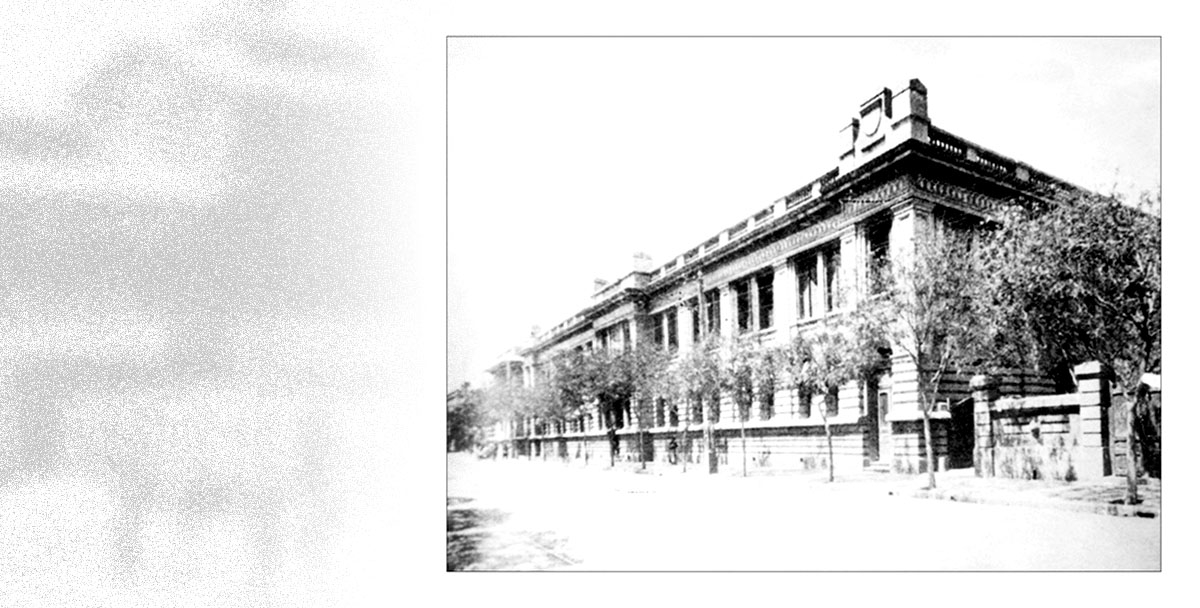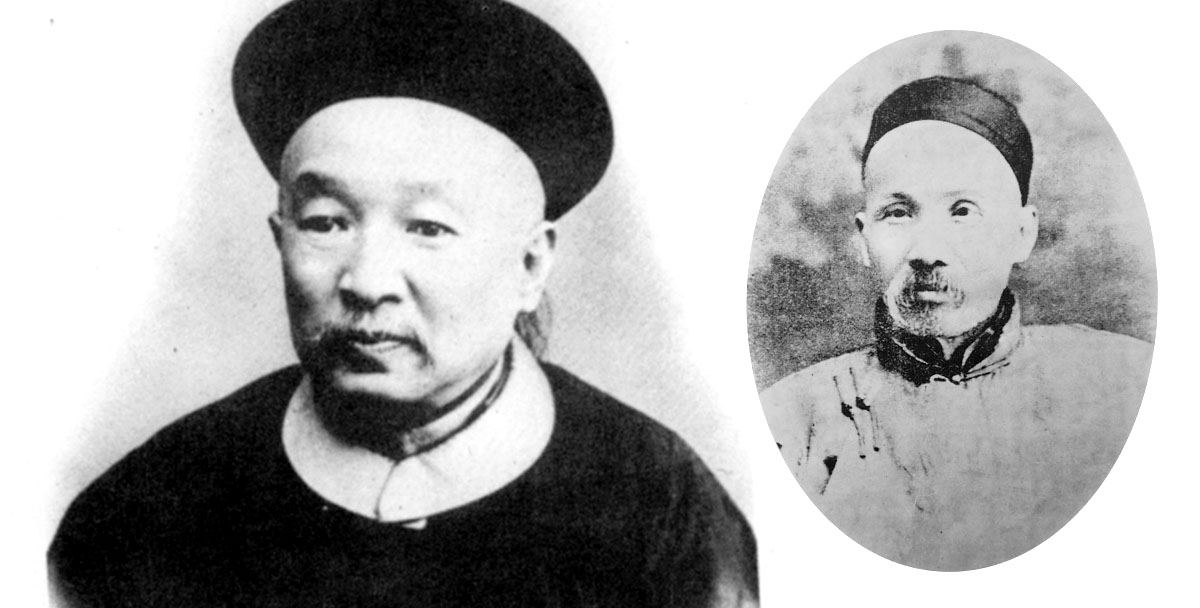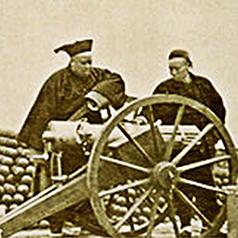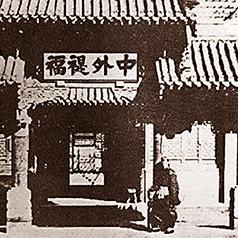As the Self-strengthening Movement continued, the Western Affairs Camp (洋務派) recognised that they could not rely on the government’s coffers alone to fund the country’s armament upgrades. The country’s industrial base had to be strengthened and civilian industries in the form of government-supervised, merchant-managed (官督商辦) enterprises had to be developed. In view of this, “wealth building” became the guiding principle in the movement’s later phase. Its objectives included:
Development of sea and land transport: China Merchants Steam Navigation Company (輪船招商局), established in Shanghai (上海), operated both river and oceangoing shipping vessels; in Beijing (北京) and Shanghai, attempts were made (without success) to attract foreign investment in railways; China later constructed its own railway connecting Tangshan (唐山) and Xugezhuang (胥各莊).
Improvement of the postal and telecommunications system: telegraph lines were laid between Tianjin (天津) and Beitang Forts (北塘炮台) at the estuary region near Dagu (大沽) on a trial basis; the headquarters for the telegraph system was established in Tianjn and seven branches in other locations.
Launch of mining operations: the Kaiping Coal Mining Bureau (開平礦務局), the Mohe Gold Mining Bureau (漠河金礦局), and Hanyang Steel Works (漢陽鐵廠) were established in Zhili (直隸), Heilongjiang (黑龍江), and Hubei (湖北) respectively.
Establishment of civilian enterprises: the Gansu Woolen Textile Bureau (甘肅織呢總局) the Machinery Weaving Bureau (機器織布局), and various factories that produce woven textiles, spun yarn, reeled silk, jute products, needles and nails, and wool felt were established. All utilised Western techniques and machinery for production, and could be categorised as near-modern age enterprises.
The industries developed during the Self-strengthening Movement began to shape China’s industrial and commercial sector.
|
|
How was the construction of the Tangshan-Xugezhuang Railway? Before it, there were attempts to build railways in Beijing and Shanghai. How was their development? Why is the Tangshan-Xugezhuang Railway the only one left standing to this day? |
|
|
See answer below. |
The China Merchants Steam Navigation Company’s quay in Tianjin. Wealth creation became the chief objective during later phase of the Self-strengthening Movement. Thus, major emphasis was placed on developing industries, commerce, shipping, and telecommunications. In January 1873, the China Merchants Steam Navigation Company was officially established in Shanghai as a government-supervised, merchant-managed enterprise. The company operated both river and oceangoing vessels and owned wharfs in many coastal and riverine cities.
Government-supervised, merchant-managed enterprises were undertakings in which merchants who supplied capital for their owned shares and officials were assigned by the government to supervise its operations. In the 1870s, the Western Affairs Camp gradually recognised the need for wealth creation and began to establish civilian industries instead of focusing solely on military industries. Lacking funds and wary of losses, the Qing government encouraged entrepreneurs to set up and fund the required businesses. However, the government did not trust these entrepreneurs enough to let them run the businesses on their own. In view of considerable opposition to these fledging enterprises from conservative factions, they decided that pro-Western affairs officials should be responsible for providing support, and thus the government-supervised, merchant-managed business mode came about. The government and the merchants both owned some of the shares of these enterprises. For instance, the China Merchants Steam Navigation Company, the first government-supervised, merchant-managed enterprise, started out with government-owned shares of 100,000 sliver taels (兩), and 250,000 taels of entrepreneur-owned shares, of which the brothers Zhu Qiang (朱其昂) and Zhu Qishao (朱其紹) owned 100,000 taels each and Li Hongzhang (李鴻章) owned 50,000 taels. This business mode was popular in the 1870s to 1880s and was partly responsible for kick-starting corporate development in modern-day China. With continued economic development and the accumulation of entrepreneurial experience, the government-supervised, merchant-managed mode became increasingly unsuited to the times. Starting from the 1890s, they gradually fell out of favour and were rapidly replaced by growing numbers of private enterprises that were wholly owned and operated by entrepreneurs.
Besides developing water transport, the Western Affairs Camp accorded priority to railway development. In 1881, the Tangshan-Xugezhuang Railway commenced operations as the first Chinese-built railway in China. It was a milestone in the history of China’s transportation systems. Pictured is the railway’s opening ceremony.
The Daye Iron Mine (大冶鐵礦). In 1890, the Daye Iron Mine was founded in Hubei. Ore mining is important to China’s military and heavy industrial development.
Iron ore must undergo smelt processing. Hanyang Steel Works, located in Hubei, was established by Zhang Zhidong (張之洞), the then Viceroy of Huguang (湖廣總督). The construction began in 1891 and the plant became operational in 1894. It was the first government-operated steel industry in early modern China and the largest of its kind in Asia.
The production site of the Kaiping Coal Mine (開平煤礦). Coal was a key strategic resource, as it was a major industrial and transportation fuel at the time of the Self-strengthening Movement. The Kaiping Coal Mining Bureau was established in 1878 and commenced operation three years later. As a mining enterprise, the bureau was considered large-scale and modern in its time.
A relief sculpture featuring Li Jinyong (李金鏞)’s inspection of a gold mine. In 1888, Li established the Mohe Gold Mining Bureau in Mohe, a place near the China-Russia border. It commenced operation the following year and was one of China’s few gold-mining enterprises at the time of the Self-strengthening Movement.
Besides developing heavy industries, the Self-strengthening Movement also started a number of civilian light industries. Among them, the light industries in Shanghai were particularly noteworthy. A prospectus from the Shanghai Machinery Weaving Bureau (上海機器織布招商局) issued in the newspaper Shun Pao (《申報》) upon the bureau’s establishment in 1879 (left). It stated that 2,000 shares had been sold and 2,000 shares were still available for subscription, and was signed “All members of the Shanghai Machinery Weaving Bureau”. In 1891, the New Huaxin Textile Bureau (華新紡織新局), a government-merchant joint venture, officially commenced operation in Shanghai. It was later renamed the New Hengfeng Textile Bureau (恒豐紡織新局) (right).
During the Self-strengthening Movement, light industries also made great strides in China’s inland cities. Between 1893 and 1894, various factories were set up in Wuchang (武昌), Hubei, for the manufacturing of woven textiles, spun yarn, reeled silk, and jute products. Their prospectuses were released to the public.
The Tianjin Telegraph Headquarters. The Self-strengthening Movement also kick-started China’s development of a modern-day telecommunications industry. In 1880, Tianjin established the Tianjin Telegraph Headquarters. In the years that followed, more lines were gradually laid to connect more places of the country.
Famous entrepreneurs in the early modern era: from left: Sheng Xuanhuai (盛宣懷), Zheng Guanying (鄭觀應). The Self-strengthening Movement became the cradle of China’s first cohort of entrepreneurs in the early modern era. Not only did these trailblazers notch up various achievements in establishing and operating industries, but they also contributed greatly to cultural education, philanthropy, and numerous other areas. The movement began to shape China’s modern industrial and commercial sector.
|
|
How was the construction of the Tangshan-Xugezhuang Railway? Before it, there were attempts to build railways in Beijing and Shanghai. How was their development? Why is the Tangshan-Xugezhuang Railway the only one left standing to this day? |
|
|
The Tangshan-Xugezhuang Railway was the first Chinese-built railway in China. It was 9.3-kilometre long and ran from Tangshan to Xugezhuang (the present-day Fengnan District﹝豐南區﹞) in Tangshan, Hebei﹝河北﹞) and is now part of the railway from Beijing to Shenyang (瀋陽). The construction of the railway began in May 1881 and ended in November. When it first commenced service, the carriages were drawn by mules and horses, and a steam locomotive was not used until the following year. In truth, Beijing and Shanghai were both considered as potential sites for building China’s first railway. As early as 1862, Jardine, Matheson and Co. and other British and American firms proposed building a railway between Suzhou (蘇州) and Shanghai, but they never received authorisation to proceed. In 1865, an American firm built a 500-metre-long railway outside the Xuanwu Gate (宣武門) in Beijing to demonstrate the technology. Once it was completed, it was promptly dismantled by the Infantry Commander’s Office (步軍統領衙門). In 1880, Jardine, Matheson and Co. built a railway between Shanghai and Wusong (吳淞). Due to objections from civilians living along the route and the death of a soldier in a train accident, the railway was eventually disassembled and cast into the sea. The Tangshan-Xugezhuang Railway differed from these early railways in that it was built by Chinese enterprises while the others were built by foreign companies. |
Source of most photos used in this feature piece: Fotoe (pictures 1-6 and 10), misc. photo sources.






